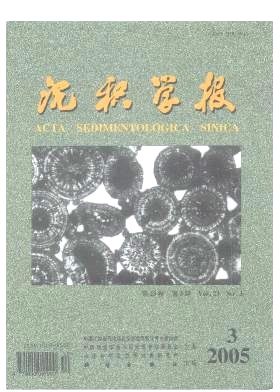HTML
| [1] | 1 Urey H C. The thermodynamic properties of isotopic substances[J].Journal of Chemistry Society,1947.562-581. 2 Epstein S,Bushhaum R,Lowenstom H. Revised carbonate-water isotopic temperature scale[J].Geological Society of America Bulletin,1953.417-426. 3 Dettman D L,Reische A K,Lohmann K C. Controls on the stable isotope composition of seasonal growth bands in aragonitic fresh-water bivalves(unionidae)[J].Geochimica et Cosmochimica Acta,1999,(7-8):1049-1057. 4 Grossman E L,Ku T L. Oxygen and carbon isotope fractionation in biogencic aragonite:temperature effects[J].Chemical Geology,1986.59-74. 5 Beck J W,Edwards R L,Ito E. Sea-surface temperature form coral skeletal strontium/calcium ratios[J].Science,1992.644-647. 6 Shen C,Hastings D W,Lee T. High precision glacial-interglacial benthic foraminiferal Sr/Ca records fromthe eastern equatorial Ocean and Caribbean Sea[J].Earth and Planetary Sciences Letters,2001,(3-4):197-209. 7 Martin P A,Lea D W,Rosenthal Y. Quaternary deep sea temperature histories derived from benthic foraminiferal Mg/Ca[J].Earth and Planetary Sciences Letters,2002,(1-2):193-209. 8 Stott L,Poulsen C,Lund S. Super ENSO and globalclimate oscillations at millennial time scales[J].Science,2002.222-226. 9 Khim B,Kraantz D E,Grette J B. Stable isotope profiles of Last.Interglacial(Pelukian Transgression) mollusks and paleoclimate implications in the Bering Strait Region[J].Quaternary Science Reviews,2001,(1/3):463-483. 10 Owen R,Kennedy H,Richardson C. Experimental investigation into partitioning of stable isotopes between scallop(Pecten maximus) shell calcite and seawater[J].Palaeogeography Palaeoclimatology Palaeoecology,2002,(1/2):163-174. 11 Watabe N. Shell structure[M].New York:Academic Press,1988.69-104. 15 Fritz L W,Ragone L M,Lutz R A. Biomineralization of barite in the shell of the freshwater Asiatic clam Corbicula fluminea(Mollusca:Bivalvia)[J]. Limnology and Oceanography,1990.756-762. 16 梅冥相. 碳酸盐岩导论[M].北京:地质出版社,1998. 17 Anad n P,Ghetti P,Gliozzi E. Sr/Ca,Mg/Ca ratios and Sr and stable isotopes of biogenic carbonates from the Late Miocene Velona Basin(central Apennines,Italy) provide evidence of unusual non-marine Messinian conditions[J].Chemical Geology,2002.213-230. 18 俞旭,江超华. 现代海洋沉积矿物及其X射线衍射研究[M].北京:科学出版社,1984. 19 Goldsmith J R,Graf D L,Heard H C. Lattice constants of the calcium-magnesium carbonate[J].American Mineralogist,1961.453-457. 20 徐凤山. 中国双壳类软体动物[M].北京:科学出版社,1997. 21 齐钟彦. 中国经济软体动物[M].北京:中国农业出版社,1998. 22 程天文,赵楚年. 我国主要河流入海径流、输沙量及对沿岸的影响[J].海洋学报(中文版),1985,(04): 461-471. 23 Beliaeff B,O. Connor T P,Daskalakis D K. Mussel Watch Data from 1986 to 1994:Temporal Trend Detection at Large Spatial Scales.Environ[J].Science Technology,1994. 1411-1415. 24 Matthews T G,Fairweather P G. Growth rates of the infaunal bivalve Soletelllina alba(Lamarck,1818)(Bivalvia:Psammobiidae) in an intermittent estuary of southern Australia[J].Estuarine Coastal and Shelf Science,2003,(4):873-885. |






 DownLoad:
DownLoad: